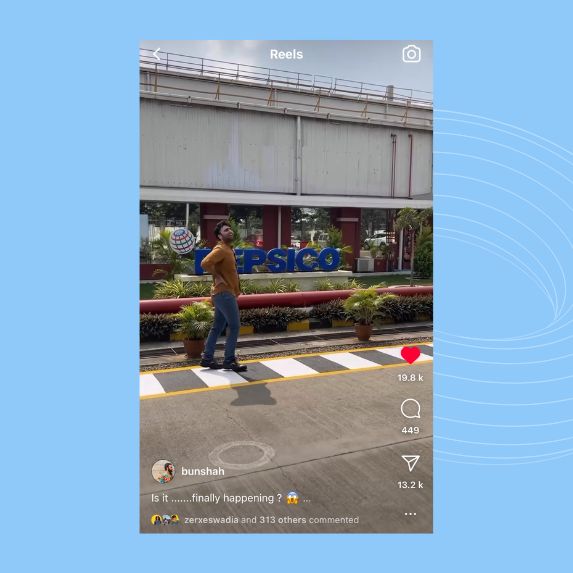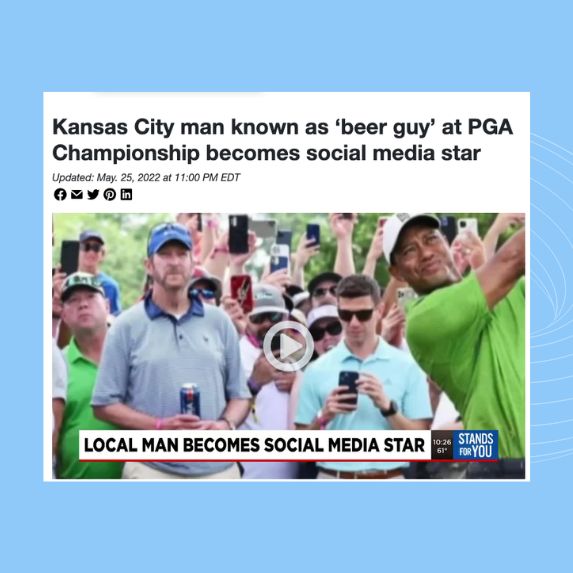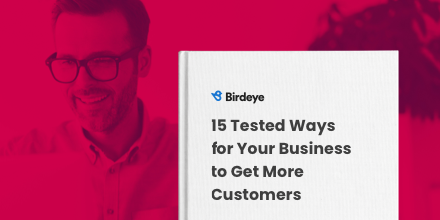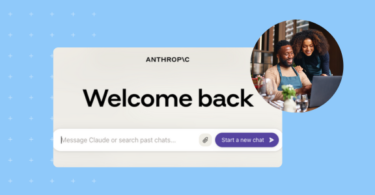We often hear of brands going viral either by seizing a timely opportunity to repost a tweet or by crafting a relevant Instagram post on a trending topic. While it may seem like the work of luck or quick thinking, it’s actually a deliberate strategy that combines viral marketing with real-time marketing.
Businesses that build a social media strategy incorporating real-time marketing can grow to scale faster, boost brand awareness, and establish a strong presence across multiple platforms.
Wondering how your business can also be the talk of the online town? Read on to know what precisely real-time marketing is and how your business can benefit from it.
Table of contents
- What is real-time marketing?
- Why do location-based businesses need real-time marketing?
- How to implement real-time marketing strategies for multi-location businesses
- 3 real-time marketing examples for inspiration
- FAQs on real-time marketing
- Stay agile and build a solid social media presence with Birdeye
What is real-time marketing?
Real-time marketing is a strategy businesses can use to create engaging customer interactions by leveraging trends, customer feedback, and current events. Businesses that employ real-time marketing strategies can reach a broader target audience and grow their presence online.
Critical aspects of real-time marketing include:
- Identifying relevant trends to capitalize at the right moment.
- Speed and agility to craft engaging social media content and respond quickly to customer mentions, trending topics, and more.
- A focus on customers to instantly spot and act on valuable insights from customer feedback.
Pro tip: Real-time marketing is not just about randomly catching moments online or from customer feedback. A real-time marketing strategy ensures you never miss an opportunity to constantly monitor social media trends and customer feedback from reviews, surveys, and other conversations.
Why do location-based businesses need real-time marketing?
Location-based businesses can immensely benefit from investing in real-time marketing by boosting brand awareness, social media engagement, and customer experience while attracting relevant followers and driving meaningful interactions.
Let’s quickly understand how these benefits may apply to your business.
- Improving brand awareness: Participating in real-time marketing increases customer interactions and improves your brand’s reach. This directly translates to heightened brand awareness for your business, especially in the targeted local markets.
- Increasing social media engagement: Real-time marketing campaigns have the potential to go viral, inviting your audience to like, comment on, and share your content. This interaction can catapult your social media engagement and significantly improve overall engagement rates.
- Attracting relevant followers: Higher engagement rates and enhanced reach mean your content reaches the right audience. For example, if your brand posts about a local event, it is more likely to reach the local community and help you secure relevant followers for your location-based accounts.
- Increasing customer engagement: Location-based businesses handle hundreds of customers daily but struggle to keep them engaged beyond the first point of purchase. Real-time marketing on trending topics, weather updates, current events, and local happenings can help you keep them connected to your business. The more they hear from you, the more likely they will engage with your business.
- Boosting customer experience: Acting on customer feedback is vital to any real-time marketing campaign. Customers feel heard when your brand changes its strategy, leading to an improvement in customer experience.
How to implement real-time marketing strategies for multi-location businesses
By implementing a solid real-time marketing plan, multi-location businesses can attract local audiences, boost their reach in targeted locations, and outshine their competitors.
Here’s how you can put a successful real-time marketing strategy into place:
Actively identify and monitor the triggers
We know that the key to a successful real-time marketing strategy is being on the lookout for opportunities. These usually originate from well-known triggers like pop culture news, stock updates, weather forecasts, national holidays, breaking news, or social media trends.
Location-based businesses must have systems that can locate these triggers and consistently monitor them to jump on the right opportunities.
Pro tip: In marketing, real-time signifies different things for each business. Not every trend is worth following. Identifying the triggers your brand can leverage without compromising integrity can help you avoid faux pas.
Identify the customer group to engage with real-time marketing
In marketing, real-time content relevance changes with customer groups. Not every piece of information is engaging for everyone. To simplify real-time marketing, location-based businesses must segment their audience base to pick the right audience group for the campaigns.
This can be customers in different locations, customers looking for different products, or potential customers who engage with your content but are yet to convert.
Knowing your audience can help you deliver impactful real-time marketing campaigns. Businesses can also use audience insight tools like Birdeye to gain keen insights into their customer base and develop tailored content.
Choose the right real-time marketing platform
Many brilliant campaigns have fizzled out because of the choice of incorrect marketing platforms. Not everyone engages with the same content on all channels. For example, if you choose video, it is wiser to go with Instagram/TikTok instead of SMS or even Twitter for that campaign.
However, if you quickly join a trending conversation with a witty response, Twitter is the place to be.
Align to the right marketing KPIs
Businesses start every marketing campaign with a goal in mind. But, it is extremely important that it is the right one. Real-time marketing campaigns seldom drive conversions unless you tag it to a product you can boost.
Impressions, reach, brand awareness/recognition, social media engagement, and follower growth are ideal marketing KPIs to monitor for real-time marketing campaigns.
Customize strategy for each location-based account
Real-time marketing is about capturing the right moment and emotion to engage your audience. But different locations have different needs. So, you need to tailor your approach to each location to truly engage with your audience.
Customizing your real-time marketing strategy helps you choose the right social media platform, monitor the right keywords, and engage impactfully with your target audience across locations.
Activate real-time marketing with Birdeye
Want to see the impact of Birdeye on your business? Watch the Free Demo Now.
3 real-time marketing examples for inspiration
Are you wondering how to implement real-time marketing strategies for your business? Here are three real-time marketing examples from well-known brands and tips on replicating them for your multi-location business.
IKEA
Real-time conversion marketing involves connecting the right moment to your brand. And Ikea is a market leader in this arena.
Ikea has consistently picked the right moment to promote its products.

For instance, during the Prince Harry wedding, Ikea jumped on the moment and promoted its chair, which bears the same name. Another instance is when Spain won the Euro Cup in 2024, and Ikea promoted its cups to England’s audience.
Real-time marketing at its best 🙌🏻@IKEAUK pic.twitter.com/tU1NU6kIZ0
— Ivan Zivkovic (@ivanziv) July 14, 2024
Lays
One of the best ways to leverage real-time marketing is to work on customer feedback and deliver an improved customer experience. Lays, the famous snack brand, recently changed the flavor of their oldest product in India.

What happened next was an outpouring of customer feedback demanding that they bring the old flavor back.
Lays capitalized on this moment, partnered with the creator who led the charge, and relaunched the original flavor.
Location-based businesses can also replicate this process of monitoring social media and other forums for feedback and delivering an improved product via real-time marketing.
We did a cool thing.
— Viraj Sheth (@viraj_sheth) December 7, 2023
1. Lay’s launched their new Magic Masala flavour that everyone hated.
2. Zervaan, a creator we represent, made a video on it that went viral. I’m talking 7M views, 200k shares.
3. Bingo cashes in on the trend. They send a truck full of their product to… pic.twitter.com/MalFoQ9Tmi
Michelob Ultra
Championing customers who inadvertently help your brand get a social media moment is a masterstroke in real-time marketing. And that is precisely what Michelob Ultra did. In 2022, a picture of a customer holding their beer can instead of a mobile phone at a Golf tournament was doing the rounds. The brand instantly jumped on it.

Within the next 48 hours, they connected with the customer, released merchandise, and promoted the story on their social media accounts.
The brand went further, making the “Beer guy” an ambassador and taking him on the following PGA tour. This helped skyrocket their social media reach and even sell out the merch within a day.
When this guy went viral for holding a beer instead of an iPhone, @MichelobULTRA went real-time marketing.
— Jack Appleby (@jappleby) May 22, 2023
Within 48 hours, the brand:
– made him their social spokesperson
– gave him his own merch line?!
– took him to the next PGA tour stop
A social case study + analysis 🧵: pic.twitter.com/k84xdaXUdH
FAQs on real-time marketing
When brands invest in real-time marketing, customers get engaging content, exclusive deals, and offers.
The goal of real-time marketing is for businesses to strengthen their relationships with their target audience, engage their audience across marketing channels, and drive conversions.
Real-time content marketing is the process of engaging your audience by creating content around current events, customer feedback, or social media trends.
A real-time marketing system is a collection of strategies, tools, and processes that enables businesses to instantly spot trending topics, leverage customer feedback, and create engaging content to connect with their audience.
Stay agile and build a solid social media presence with Birdeye
Real-time marketing is all about jumping on the right moment and creating opportunities for engagement with your customers. But it can be challenging to stay on top of trends, manage multiple locations, and deliver exceptional customer service – all at once.
That’s where Birdeye comes in.
Birdeye is an all-in-one reputation management platform that empowers businesses to listen to real-time customer feedback. Birdeye gathers user reviews from over 100 sources and manages them from a centralized dashboard. With Birdeye, you can also:
- Monitor customer conversations on chatbots and other messaging channels in real-time to access AI-generated summaries to gain insights into their needs
- Create, schedule, and monitor multiple social media accounts with a centralized social media management tool
- Leverage AI to monitor customer feedback, create tickets, and improve customer experience
Watch the free demo to learn more about Birdeye’s role in real-time marketing success.

Originally published









